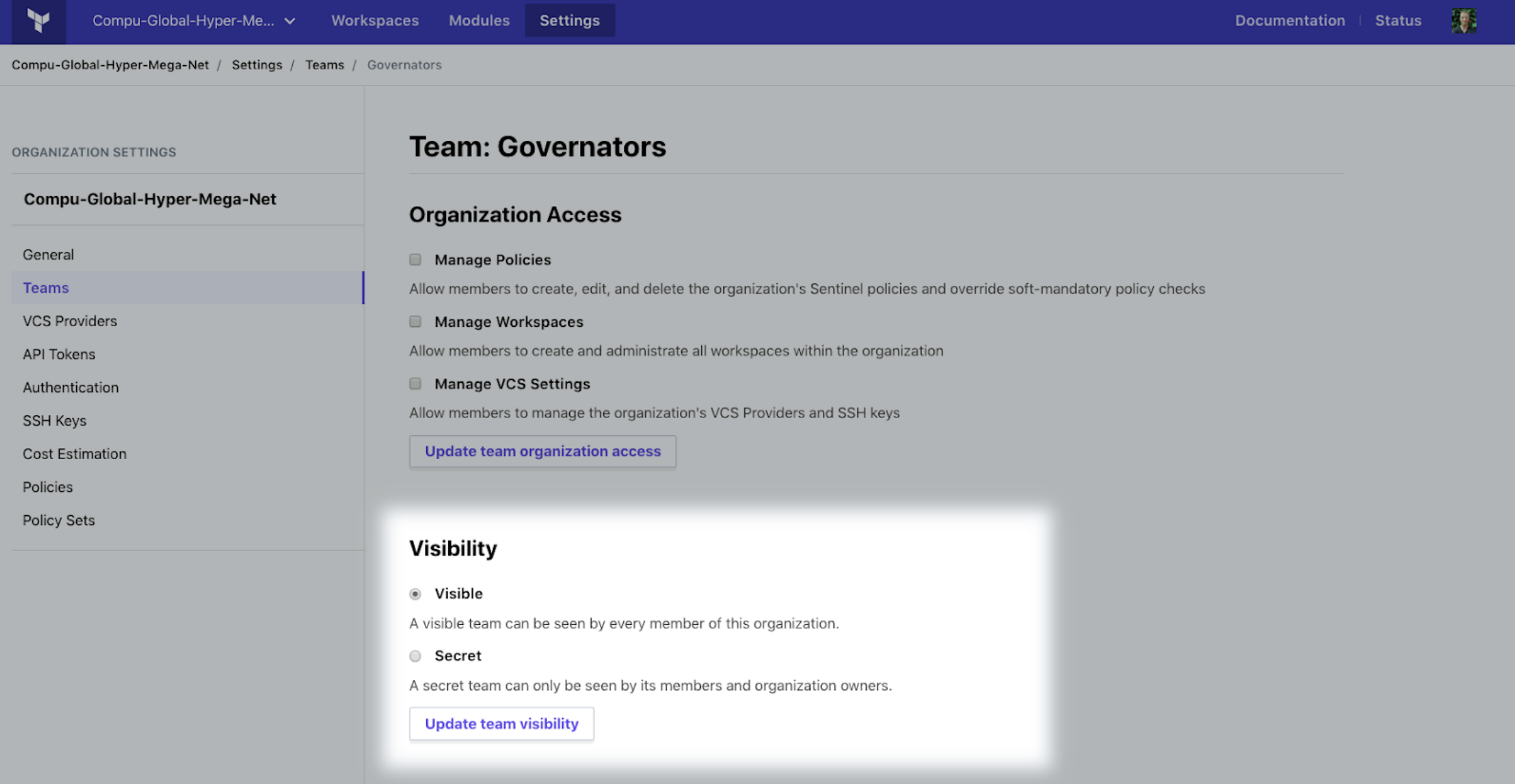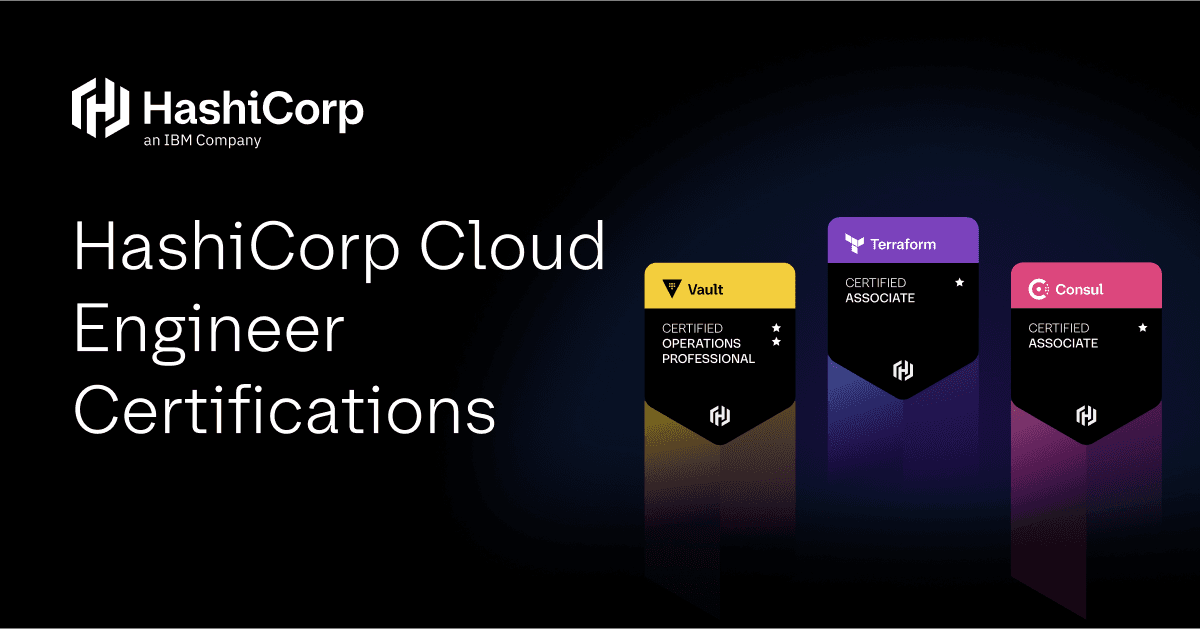Team Visibility Settings for Terraform Enterprise and Cloud
We are excited to announce team visibility settings for Terraform Enterprise and Cloud. These settings provide an improved workflow to delegate ownership of workspaces and manage access for specific teams.
Previously, a workspace admin would only be able to view teams that they were a member of. For customers with functional teams that span many workspaces, this would mean coordination between individuals to agree on the best way to temporarily invite someone to a team, add that team to a workspace, and then restore the memberships to the original state.
In addition to being a little cumbersome, it also created a brief window where someone was granted a level of privilege to Terraform Enterprise and Cloud that was above what they should have required.
Today, all teams within Terraform Enterprise and Cloud now have a “visibility” setting which can be one of two states:
- Secret (default): Only team members and organization owners can read a team and its membership. This is the same behavior that existed before.
- Visible: Every user in the organization can see the team and its membership on the Teams page.
Workspace admins are now able to see all teams that are set to visible, and can add those teams to a workspace without needing to be a member of the team.
We’ve also seen instances where customers are managing team access via the API, for example enabling them to automatically grant oversight of all new workspaces to their internal InfoSec or Compliance teams. In some of these instances it is preferable to keep this detail, and the individuals within those teams, hidden from view. So we’ve retained the existing behavior which allows teams to be secret.
»Changing a team’s visibility setting
A team's visibility can be changed by any organization owner under the team's settings page:

»Learn more
The full details on managing team settings can be found in the Terraform Team documentation. In addition, we’ve updated the API documentation to include information on how to manage these settings via the API.
For more information on Terraform Cloud and Terraform Enterprise or to get started with your free trial, visit the Terraform product page. To learn more about Terraform visit the HashiCorp Learn platform and see it in action.
Sign up for the latest HashiCorp news
More blog posts like this one

Protect data privacy in Amazon Bedrock with Vault
This demo shows how Vault transit secrets engine protects data used for RAG in an Amazon Bedrock Knowledge Base created by Terraform.

Preventative beats reactive: Modern risk management for infrastructure vulnerabilities
Vulnerability scanning is a last line of defense. Your first line should be preventative risk management strategies that shift security left and narrow the window for exploits.

Ace your Terraform Professional exam: 5 tips from certified pros
Three HashiCorp Certified: Terraform Authoring & Ops pros share their advice for preparing for and completing the certification exam.